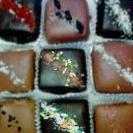-
Welcome to the eG Forums, a service of the eGullet Society for Culinary Arts & Letters. The Society is a 501(c)3 not-for-profit organization dedicated to the advancement of the culinary arts. These advertising-free forums are provided free of charge through donations from Society members. Anyone may read the forums, but to post you must create a free account.
eG Foodblog: Helenjp (teamed with Marlena) - The New Year's here -
-
Similar Content
-
- 25 replies
- 1,015 views
-
- 4 replies
- 1,515 views
-
- 527 replies
- 101,297 views
-
- 4 replies
- 1,963 views
-
- 34 replies
- 8,940 views
-
-
Recently Browsing 0 members
- No registered users viewing this page.





Recommended Posts